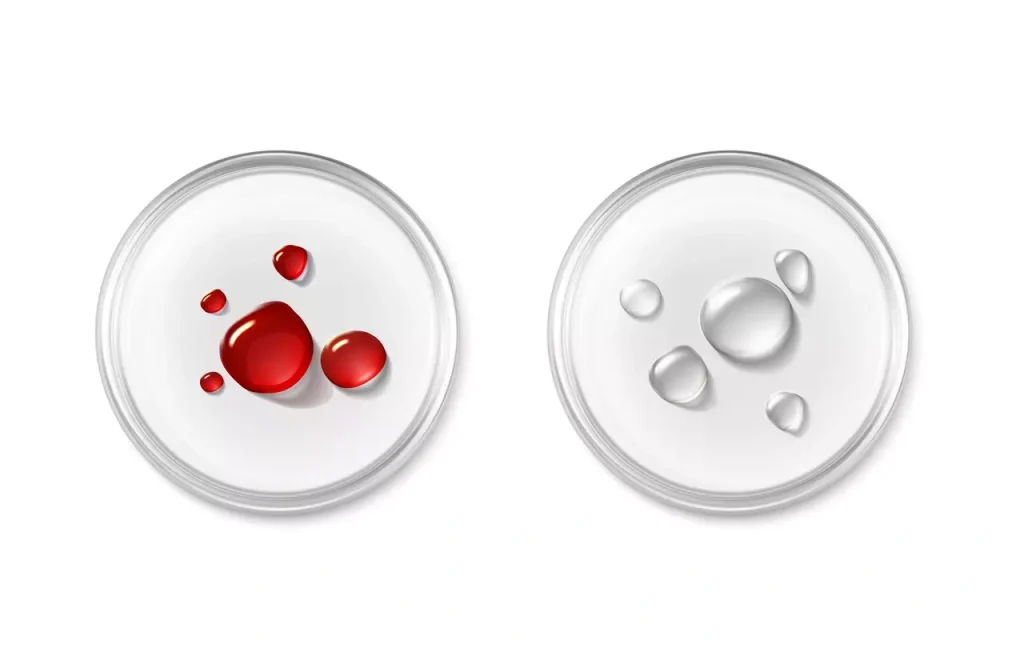
When looking into new treatments like stem cell therapies, safety and FDA approval are key. At Liv Hospital, we focus on proven methods to guide your health choices.
The FDA is key in checking regenerative medicine to make sure it’s safe and works. For example, they approved PARP inhibitors for ovarian cancer. This shows how important their strict checks are for patient safety.
We’ll dive into the world of stem cell regeneration patches and the FDA’s rules. This will help clear up if these treatments are safe and work well.

Regenerative medicine, including stem cell therapies, is growing fast in the U.S. This growth is thanks to new technology and a big demand for new treatments.
Stem cell technology is very promising for treating many health issues. Stem cells can turn into different cell types. This makes them very useful for fixing damaged tissues. Scientists are looking into using them for diseases like diabetes, heart problems, and some cancers.
Stem cell therapies can fix or replace damaged tissues. This opens up new ways to treat diseases that were hard to manage before.
The market for regenerative medicine is expanding quickly. Stem cell therapies are a big part of this growth. The global market for regenerative medicine is expected to keep growing. This is because more money is being put into research and development.
| Market Segment | Current Status | Growth Potential |
|---|---|---|
| Stem Cell Therapies | Rapidly evolving | High |
| Regenerative Medicine | Growing demand | Significant |
| Exosome Therapies | Emerging | Promising |
Even with growth, the industry faces big challenges. One major issue is FDA regulation. Most stem cell patches and exosome therapies are not approved for general use. This shows we need stricter rules to oversee the industry.

The FDA is key in making sure stem cell patches are safe and work well. As regenerative medicine grows, the FDA’s watch is vital. It keeps us safe while encouraging new ideas.
The FDA’s rules for regenerative medicine are flexible and keep up with new discoveries. These rules help with making, testing, and selling these products.
Key parts of the FDA’s rules include:
To get FDA approval, cell products must go through strict testing. The FDA wants to see that these products are safe and effective through clinical trials.
The following table outlines the key requirements for FDA approval:
| Requirement | Description |
|---|---|
| Preclinical Studies | Laboratory and animal studies to assess product safety and efficacy |
| Clinical Trials | Human clinical trials to evaluate product safety and efficacy |
| Biologics License Application (BLA) | Comprehensive application to the FDA for licensure |
| Manufacturing Compliance | Adherence to FDA guidelines for good manufacturing practices |
The FDA has approved some cell products, like Integra Omnigraft Dermal Regeneration Matrix. It’s used for diabetic foot ulcers. This shows that, though it’s tough, some products can meet the FDA’s high standards.
Many stem cell products are out there, but only a few have FDA approval. This is because the FDA checks them very carefully. They make sure these products are safe and work well.
We’ll look at some FDA-approved stem cell products. These include Integra Omnigraft Dermal Regeneration Matrix, Omisirge, and Ryoncil. We’ll talk about what they’re used for and their benefits. These products have gone through lots of clinical trials. They meet the FDA’s high standards for approval.
Integra Omnigraft Dermal Regeneration Matrix is a dermal regeneration matrix for diabetic foot ulcers. It helps wounds heal and new tissue grow in patients with diabetic foot ulcers.
The FDA approved Integra Omnigraft. This shows the FDA’s dedication to safe and effective treatments for tough medical issues. Healthcare providers can now offer a good treatment option for diabetic foot ulcers with this dermal regeneration matrix.
Omisirge and Ryoncil are FDA-approved cell therapies for specific medical conditions. Omisirge treats certain cancers, and Ryoncil helps kids with certain genetic disorders.
These approvals show the FDA’s work to make more cell therapies available. By approving Omisirge and Ryoncil, the FDA is helping regenerative medicine grow. This gives patients new treatment options for serious health issues.
But, not all stem cell products are FDA-approved. For example, the X39 stem cell patch and QC Kinetix treatments aren’t. It’s important for patients to know if a stem cell treatment is FDA-approved. This ensures they get safe and effective care.
Knowing the FDA status of stem cell regeneration patches is key to making smart choices. The FDA ensures treatments, like stem cell therapies, are safe and work well. But, the rules for these patches can be tricky.
Many stem cell patches are sold without FDA okay, with claims that might confuse people. It’s important to know the real deal about these products.
Stem cell patches are often said to help with many health issues. But, these claims might not be fully proven. The FDA needs solid evidence before approving a product. Some patches are labeled “investigational,” meaning they’re being studied but not yet approved.
Key differences between “investigational” and “approved” status:
The difference between “investigational” and “approved” is very important for safety and making good choices. Investigational products might look promising, but they haven’t passed the FDA’s full check. Patients should be careful with treatments not approved by the FDA, as they might have unknown risks.
When looking at stem cell regeneration patches, it’s vital to ask about their FDA status and the proof for their claims.
Exosome therapies are being pushed hard, but the FDA hasn’t approved them. Exosomes are tiny messengers between cells. They’re seen as a new way to treat many health issues, like bone injuries, skin care, and brain problems.
Exosomes come from stem cells and carry proteins, fats, and genetic material. They’re thought to:
These claims have made exosome treatments popular. But, most of this is based on early studies. There aren’t many human trials.
The FDA has spoken out against exosome products. They’ve:
Patients should be careful about exosome treatments. Without FDA approval, their safety and effectiveness are unknown.
Before trying exosome therapy, do your homework. Make sure you know the risks and benefits. Always talk to a doctor before any treatment.
Using unapproved stem cell therapies can cause serious health problems. Many cases have shown this. It’s important for patients to know the risks before trying these treatments.
Unapproved stem cell treatments can lead to various side effects and complications. These can range from mild to severe. In some cases, they can cause long-term health issues. Some common side effects include:
These issues show why it’s key to choose FDA-approved treatments. Below is a table that outlines some major risks of unapproved stem cell therapies.
| Complication | Description | Severity |
|---|---|---|
| Infection | Bacterial or viral infections at the site of treatment | High |
| Tumor Formation | Development of tumors due to the introduction of stem cells | High |
| Allergic Reactions | Immune reactions to the stem cells or other treatment components | Variable |
Infection and tumor formation are major risks with unapproved stem cell treatments. Infections can happen if the cells are not handled right. Tumors can form because stem cells might grow too much. These dangers highlight the need for thorough testing and FDA approval before treatments are available to patients.
To avoid risks, be careful of clinics or providers that seem too good to be true or lack FDA approval. Always talk to a healthcare professional about the benefits and risks of any stem cell therapy.
Many stem cell products have caught our attention, but their FDA approval status is often unclear. It’s key to know the difference between what’s promised and what’s actually approved. This is true for stem cell regeneration patches and other treatments.
The X39 stem cell patch is touted as a game-changer for healing. Yet, it’s important to note it’s not FDA-approved. The maker says it’s based on science, but without FDA approval, its safety and effectiveness are unproven.
The FDA classifies the X39 stem cell patch as an unapproved product. This shows how vital it is to distinguish between marketing promises and actual approval.
QC Kinetix is well-known for its stem cell therapies for joint and muscle issues. Despite their fame, QC Kinetix treatments are not FDA-approved. They use stem cell-based methods, but without FDA approval, the risks and benefits are unclear.
“The use of unapproved stem cell products can lead to serious health risks, including infections, tumor formation, and other complications.” – FDA Statement
Regenexx is a big name in orthobiologics, providing stem cell treatments for many conditions. Though they’re marketed as advanced, Regenexx procedures are not fully FDA-approved. They use a patient’s own stem cells, but their claims and uses are limited by regulations.
| Product/Treatment | FDA Approval Status | Key Concerns |
|---|---|---|
| X39 Stem Cell Patch | Not FDA-approved | Lack of evidence on safety and efficacy |
| QC Kinetix Treatments | Not FDA-approved | Potential risks due to lack of FDA clearance |
| Regenexx Procedures | Lack full FDA approval | Regulatory limitations on specific applications |
Looking at these popular stem cell products, it’s clear we must understand their FDA approval status. This knowledge is key to making smart choices about health treatments.
Stem cell therapies for orthopedic and back pain are growing in use. The FDA is watching them closely. This is because these treatments are often used for musculoskeletal issues.
Stem cell treatments for orthopedic and back pain face big hurdles. The FDA wants proof these treatments are safe and work well. This means long, expensive clinical trials.
Key Challenges:
For pain management, stem cell therapies need solid clinical testing. This includes randomized controlled trials. These trials compare the treatment to current care standards.
The Importance of Clinical Evidence:
Here’s a summary of the FDA’s requirements for clinical evidence in pain management claims:
| Requirement | Description |
|---|---|
| Randomized Controlled Trials | Compares the treatment against existing standards |
| Substantial Evidence | Demonstrates effectiveness through multiple studies |
| Safety Monitoring | Identifies possible side effects and risks |
Understanding the rules and the need for clinical evidence helps manufacturers. They can then overcome the hurdles of bringing stem cell therapies to market for orthopedic and back pain.
As more people want stem cell therapies worldwide, it’s key to know the differences between international standards and FDA rules. The rules for stem cell patches vary a lot from country to country. This affects how easy it is to get treatment and its quality.
Liv Hospital is a top name in stem cell treatments. They follow strict international standards. This shows their dedication to quality and patient safety, following the best in regenerative medicine.
Key aspects of Liv Hospital’s approach include:
Patients looking for stem cell treatments face challenges when comparing options in different countries. It’s important to know the FDA rules in the U.S. and international standards. This helps them make smart choices.
| Regulatory Aspect | FDA Requirements | International Standards |
|---|---|---|
| Approval Process | Rigorous pre-market approval | Varies by country; some have less stringent requirements |
| Treatment Oversight | Strict post-market surveillance | Can be less thorough in some places |
Knowing these differences helps patients understand the complex world of stem cell therapies. They can make better choices for their health.
With stem cell therapies becoming more common, it’s key to know the difference between real and fake treatments. Understanding what makes a treatment legitimate is vital in the world of regenerative medicine.
Talking to your healthcare provider about stem cell therapy is important. Here are some questions to ask to make sure you’re making the right choice:
These questions will help you understand the treatment better and make a well-informed decision.
When looking into stem cell treatments, watch out for marketing claims that seem too good to be true. Here are some red flags to look out for:
| Red Flag | Description |
|---|---|
| Unsubstantiated Claims | Be wary of treatments that claim to cure many conditions without proof. |
| Overly Aggressive Marketing | Be cautious of providers who use strong sales tactics or make unrealistic promises. |
| Lack of Transparency | Be suspicious of treatments that don’t clearly explain their composition, how they’re given, or risks. |
It’s also important to know the risks of unapproved treatments. Be careful of clinics that offer untested or unapproved stem cell therapies. These can lead to serious problems.
By staying informed and careful, you can make a better choice about your stem cell treatment. Always talk to a qualified healthcare professional to discuss your needs and find the best treatment for you.
Understanding stem cell therapies is key. Knowing about FDA approval and risks helps patients get safe care. It’s vital to know the regulatory status of stem cell products and their risks.
Patients looking into stem cell treatments should be careful. They should research their options well. It’s important to ask healthcare providers about FDA approval and the evidence behind treatments. This way, patients can make smart choices and avoid risks from unapproved treatments.
Getting informed about stem cell therapies means knowing the treatments and their rules. We urge patients to be active in their healthcare. This ensures they get the best care possible.
Not all stem cell regeneration patches are FDA-approved. Always check the FDA status of specific products before use.
Some stem cell therapies are being studied for back pain. But, FDA approval is needed for marketing claims. Always verify the FDA status of specific treatments.
Exosome therapies are not FDA-approved, despite some claims. The FDA has warned against unapproved exosome products.
QC Kinetix treatments are not FDA-approved. Be cautious with unapproved therapies.
Regenexx procedures are not FDA-approved for all uses. While some treatments may follow FDA-approved protocols, others may not.
Unapproved stem cell treatments can cause serious side effects. These include infection and tumor formation. Avoid unapproved therapies.
To find legitimate stem cell treatments, ask your healthcare provider about the FDA status. Also, ask about clinical evidence and risks.
The FDA regulates regenerative medicine, including stem cell therapies. This ensures safety and efficacy.
Not all stem cell patches are safe. Always verify the FDA status and look for clinical evidence supporting the product’s claims.
Ask your healthcare provider about the FDA status, clinical evidence, risks, and benefits of the stem cell therapy.
Subscribe to our e-newsletter to stay informed about the latest innovations in the world of health and exclusive offers!
WhatsApp us